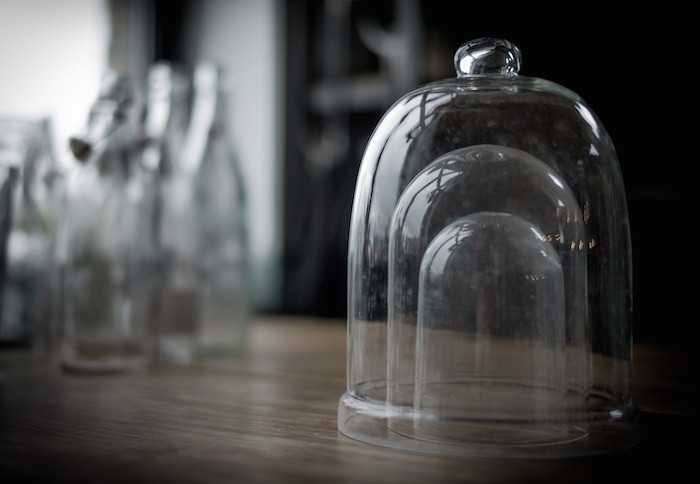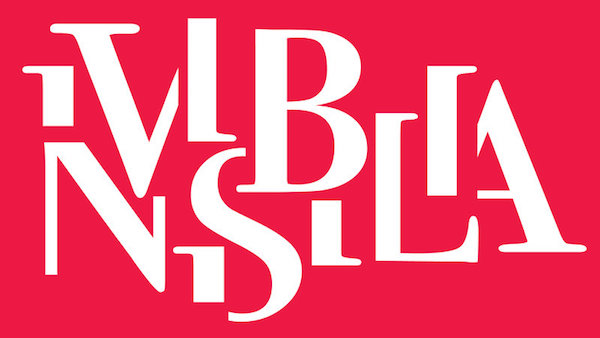
The story of NPR’s new show Invisibilia starts with a butcher knife.
Alix Spiegel and Lulu Miller were taking a walk during some downtime at the Third Coast Conference and, as sometimes is the case during meandering walks at audio storytelling confabs, the conversation turned to psychology and how people interpret their thoughts.
 It was the first time the pair of NPR science reporters had met in person, so there was no shortage of ideas or glancing bits of knowledge being tossed around. But it was the story of a therapist based in Los Angeles — who has a habit of using a butcher knife in therapy — that got the two on the same page.
It was the first time the pair of NPR science reporters had met in person, so there was no shortage of ideas or glancing bits of knowledge being tossed around. But it was the story of a therapist based in Los Angeles — who has a habit of using a butcher knife in therapy — that got the two on the same page.
“Alix sees the world in that way, thinking about systems and invisible forces affecting our lives,” Miller says. It wasn’t long after that they teamed up for a reporting trip out to L.A. to visit the therapist for a story that’s now part of the first episode of their new show.
That blend of conversation and curiosity is at the heart of Invisibilia, a show meant to probe unexplained questions in the world of science that debuts Friday on NPR. The name itself is Latin for “all invisible things,” which should give you a sense of Spiegel and Miller’s desire to challenge the unknown, one hour at a time.
But first Invisibilia has to prove something much more concrete: That it can find an audience. The show, produced by NPR, is getting a six-episode pilot season of sorts, airing on a number of member stations around the country and in segments on tentpole shows like Morning Edition and All Things Considered. But the show will also be available as a podcast, and the team behind Invisibilia hopes the growing interest in podcasts can give the show a crossover appeal with both digital and traditional audiences.
That’s less of an abstract idea now thanks to the runaway success of This American Life’s Serial podcast. The quick success of that show, reaching more than 5 million downloads in a matter of months, has proven it’s possible to have a smash hit in public radio with a podcast. Whether that process is repeatable — that’s another story.“Wouldn’t it be nice if we could all achieve that level of success?” said Eric Nuzum, vice president of programming for NPR. Nuzum said there are plenty of editorial and strategic lessons to take away from the success of Serial, including how it eased new listeners into the world of podcasts, and the show’s unique approach to telling a story.
They’re taking a page from the Serial playbook by nesting Invisibilia in other NPR shows. Like any good spinoff Serial first appeared on an episode of This American Life before airing solo. Segments from Invisibilia will also be airing in both This American Life and Radiolab.
That’s not a forced attempt at manufacturing some kind of Ira Glass bump, but instead using the connections that already exist between the shows. Spiegel was a founding producer on This American Life; Miller was previously a producer on Radiolab.
Miller and Spiegel both wound their way to the NPR mothership, moving from the world of narrative-focused stories to more news-driven pieces around the world of science. Anne Gudenkauf, the senior supervising editor of NPR’s science desk, says episodes of Invisibilia will have strong reporting and research at their core. NPR’s science reporting is meant to pique listeners interest and be accessible, she said.
“I think everybody has a well of curiosity that is never filled,” Gudenkauf said. “It doesn’t matter how educated you are, it’s just part of being in the world.”
But in trying to find a unique voice and style for Invisibilia, Spiegel and Miller said they wanted to draw on the methods and aesthetics of their former shows. Listening to Invisibilia, you hear familiar elements of both This American Life and Radiolab, a show that dives deeply into personalized storytelling and accents its pieces with mixed sound and talkative hosts. In the first episode, they take on the unseen world of thoughts — the ways we think and react to what’s in our heads, and how the field of psychology has evolved.
Turns out finding the right tone was one of the most challenging parts of the show, second only to the realization that Spiegel and Miller’s voices can sound nearly identical at times. The pair said they’ve had to learn how to blend their styles while also honing their voices.
Spiegel, for instance, is more used to sticking to a script for the show, while Miller is more comfortable with a loose back-and-forth, à la Jad Abumrad and Robert Krulwich. “We’re both dragging each other out of our comfort zones,” Miller said.
They’re also trying to find ways to play to their strengths. Spiegel gives Miller all the credit for the unique ways Invisibilia plays with audio, using pieces of interviews or other natural sound to punctuate ideas or set a scene. “She has this great facility as a producer who knows how to work with tape and make things beautiful, makes the tape work on a different level,” she said.
“I think Alix is being far too nice there,” Miller said, “That is where I exist, off paper. There are things that happen from pushing tape together that you can’t get to through writing.”
Given the idea behind the show, the duo wants to experiment with ways to explain phenomena that are sometimes unexplainable. From the first episode to the sixth, the show’s sound and style were shifting, they said. Spiegel said her work on the science desk typically focuses on ideas and concepts that are hard to illustrate, and Invisibilia is an opportunity to build understanding of the things that frame our everyday life.
“What it will be is evolving very much,” Spiegel said. “If you listen over the course of the season, you hear an evolution. We’re bringing more humor into it, more far-out stuff into it.”
It’s not hard to see — or hear in this case — that Miller and Spiegel are having fun, and that spirit helps animate the stories they tell throughout the show. Still, the overall goal of Invisibilia is to make a little sense of concepts and ideas in science that affect us all, even if we don’t know it. “I think we both share the goal of wanting listeners to come away with practical tools, some little new way of seeing the world that can help you with your stuff,” Miller said.
Putting a new public radio show out into the world is not a simple task. It’s an uphill battle to find airtime on member stations around the country. In 2012, NPR launched the TED Radio Hour and the game show Ask Me Another. The shows have found success in different ways: TED Radio Hour is now on 520 stations, Ask Me Another is on 236. (A third show launched at the same time, Cabinet of Wonders, only lasted six episodes.)
The goal for Invisibilia is to debut on 200 stations, Nuzum told me. With the help of stations, as well as segments on other public radio shows, NPR is trying to test the best method for launching a new show. “Releasing it in a bunch of different places we can see where the gravitational pull is for the material,” Nuzum said.
In the past, NPR shows went through a longer development pipeline. Now, Nuzum said, they want to get things on the air quickly and develop a show in realtime. “It’s not a matter of ‘We decided we were going to release a show in January 2015,'” Nuzum said. “This is the show that was ready at this time.”But the big push for Invisibilia will be digital, Nuzum said, as they hope the show can gain a sizable following as a podcast. Podcasts like Planet Money and Pop Culture Happy Hour have connected with listeners who might be outside of NPR’s terrestrial reach. Nuzum said they want to cultivate both audiences, not simply use one medium to drive listeners to the other.
That said, NPR podcasts received more than 69 million downloads in November, according Nuzum. And for the next few weeks, they plan to promote Invisibilia heavily on most of them. NPR’s just like any other podcast network in that way, trying to create a kind of digital proximity between shows for listeners — only with the advantage of huge size. “NPR is a massive gravitational force in podcasts,” he said.